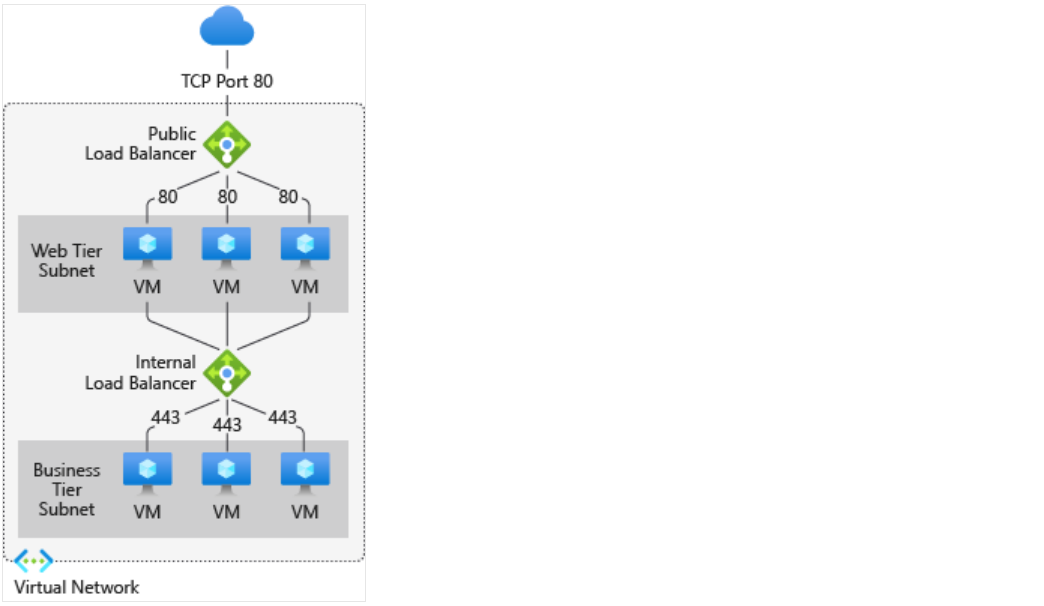关于Azure-平台Load balancing下的Load Balancer-负载均衡器
Posted on 2023-07-10 20:54 520_1351 阅读(78) 评论(0) 编辑 收藏 举报关于Azure-平台Load balancing下的Load Balancer-负载均衡器,有如下几个重要的知识点
1、Azure 负载均衡器在开放式系统互连 (OSI) 模型的第 4 层上运行。
2、可以使用 运行状况探测 来监视已实现负载均衡的资源。
3、可以使用 端口转发 通过公共 IP 地址和端口访问虚拟网络中的虚拟机。
4、启用对 IPv6负载均衡 的支持。
5、对 多个端口和/或多个 IP 地址 上的服务进行负载均衡。
6、可以使用 HA 端口 ,同时对所有端口上的 TCP 和 UDP 流进行负载均衡。
Load balancing refers to evenly distributing load (incoming network traffic) across a group of backend resources or servers.
Azure Load Balancer operates at layer 4 of the Open Systems Interconnection (OSI) model.
It's the single point of contact for clients. Load balancer distributes inbound flows that arrive at the load balancer's front end to backend pool instances.
These flows are according to configured load-balancing rules and health probes.
The backend pool instances can be Azure Virtual Machines or instances in a Virtual Machine Scale Set.
A public load balancer can provide outbound connections for virtual machines (VMs) inside your virtual network.
These connections are accomplished by translating their private IP addresses to public IP addresses.
Public Load Balancers are used to load balance internet traffic to your VMs.
An internal (or private) load balancer is used where private IPs are needed at the frontend only.
Internal load balancers are used to load balance traffic inside a virtual network.
A load balancer frontend can be accessed from an on-premises network in a hybrid scenario.

尊重别人的劳动成果 转载请务必注明出处:https://www.cnblogs.com/5201351/p/17542324.html
作者:一名卑微的IT民工
出处:https://www.cnblogs.com/5201351
本博客所有文章仅用于学习、研究和交流目的,欢迎非商业性质转载。
由于博主的水平不高,文章没有高度、深度和广度,只是凑字数,不足和错误之处在所难免,希望大家能够批评指出。
博主是利用读书、参考、引用、复制和粘贴等多种方式打造成自己的文章,请原谅博主成为一个卑微的IT民工!
